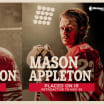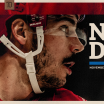Quotable: "Taro is probably a little bit disappointed in the year, being up and down year for him. He probably envisioned as a guy that wanted to be in the NHL right from the start, kind of stay there. But it's a process. It's not easy for kids out of college to come right in and step in and just stay and be a pro in the NHL. I think Taro's kind of going through that. I think the biggest thing for him is just strength. He needs to put on more strength to be able to handle himself in traffic and 50-50 battles in the hard areas. To his credit, I think he realizes that. The good thing about Taro is that he went down, he didn't sulk, he was positive with it right away and put up good production for us when he was down there in Grand Rapids. He's still a player that we believe in. He's just going through the process that it takes to become physically strong enough to be able to do what he's going to need to do in the NHL." -- Shawn Horcoff, director of player development and assistant director of player personnel



















































